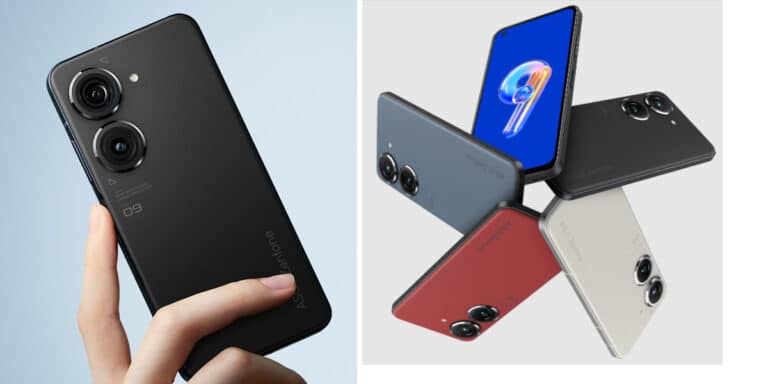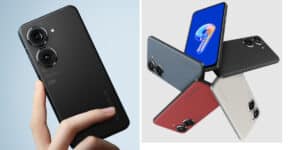Small phones do not sell well. Or so the conventional belief goes, especially in a year when Apple is expected to delete the Mini from the iPhone 14 series, and Sony has killed off its small Xperia 5 line. But no one told Asus, so it’s bringing back its diminutive Zenfone flagship – the Zenfone 9, which is even smaller and shorter than last year’s Zenfone 8.
To be fair, the corporation isn’t the only one. While Apple and Sony may be abandoning one-handed devices, Asus notes that it faces new competition from the Samsung Galaxy S22 & Xiaomi 12; both are smaller than their predecessors. The Zenfone 9 is smaller than both, and because Asus attempt to keep top features, it might be the go-to compact phone for Android consumers.
What will you see here?
Price & Availability
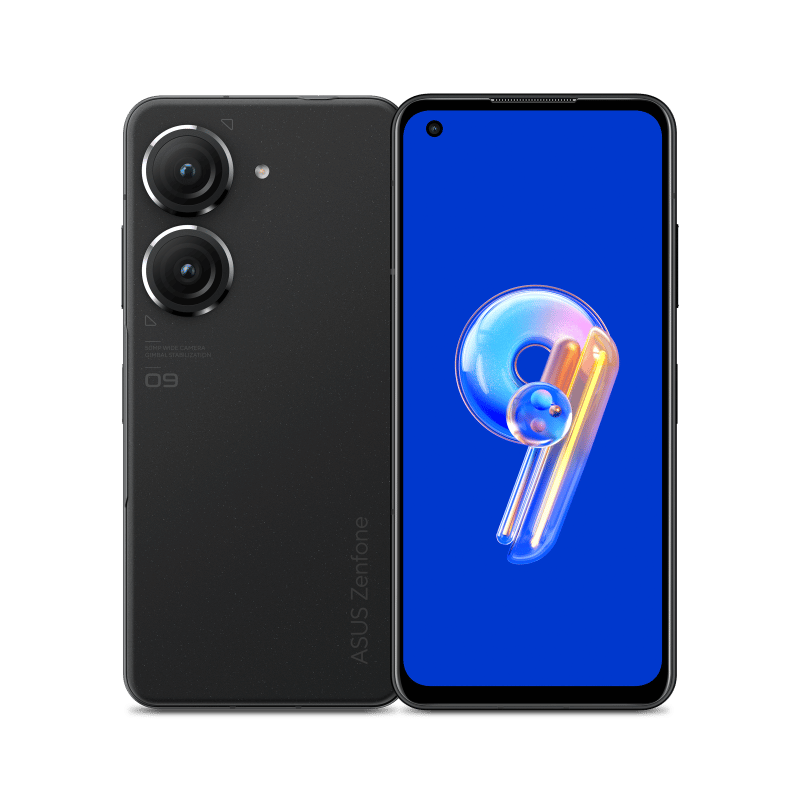
The Asus Zenfone 9 costs £699 with 8GB RAM and 128GB storage and £749 with 16GB/256GB storage. Moreover, the Samsung Galaxy S22 starts at $799 / £769, and the standard iPhone 13 starts at $799 / £779, so comparisons are inevitable, albeit Asus marginally undercuts both. However, it is significantly more expensive than the $599 / £599 Google Pixel 6.
The phone was released at the end of July 2022, far later than the Zenfone 8’s May 2021 release date. For the time being, we just have UK pricing, but it will most certainly be available in other countries.
Design
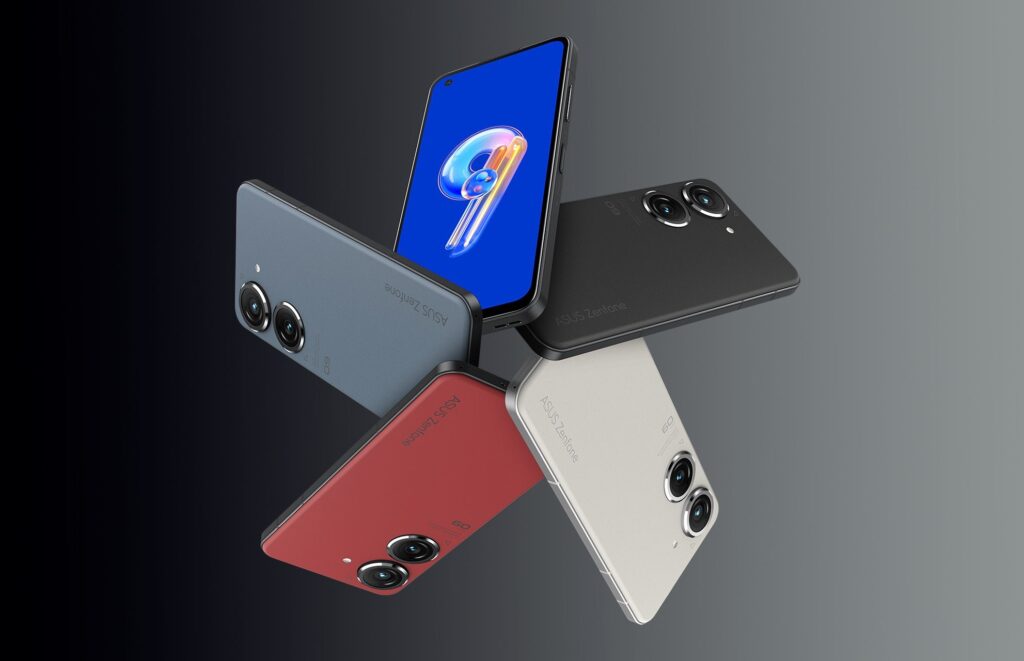
There’s a lot to enjoy about the Zenfone 9’s design. The obvious starting point is size. This phone is modest by current standards, thanks to its 5.9inch display and light, weighing only 169g.
At 9.1mm thick, it’s not the thinnest phone on the market, but it’s far from bulky, and that tiny extra thickness feels insignificant when you consider how compact the smartphone is overall. However, the design is also unique in other ways. Asus has utilized a novel polymer coating on the Zenfone 9’s back, which it claims is more scratch-resistant than standard phone plastics.
On the Zenfone 9, Asus employed a soft touch substance, resulting in an exceptionally gripping phone that reminds me of OnePlus’ Sandstone material but is less abrasive. The flat-edged metal frame feels quite comfortable, contributing to my sense of security while holding the gadget. If the Zenfone 9 is dropped, Gorilla Glass Victus will assist preserve the screen from breaking.
- It comes in cool colors :
- Midnight Black
- Moonlight White
- Sunset Red
- Starry Blue
Ports
This phone’s motif is that it tries to pack in practically everything you might desire, excluding an SD card slot – this makes sense given how much Asus managed to cram into this little body. However, there is a headphone jack, which is becoming increasingly rare on smartphones, particularly flagships.
Display
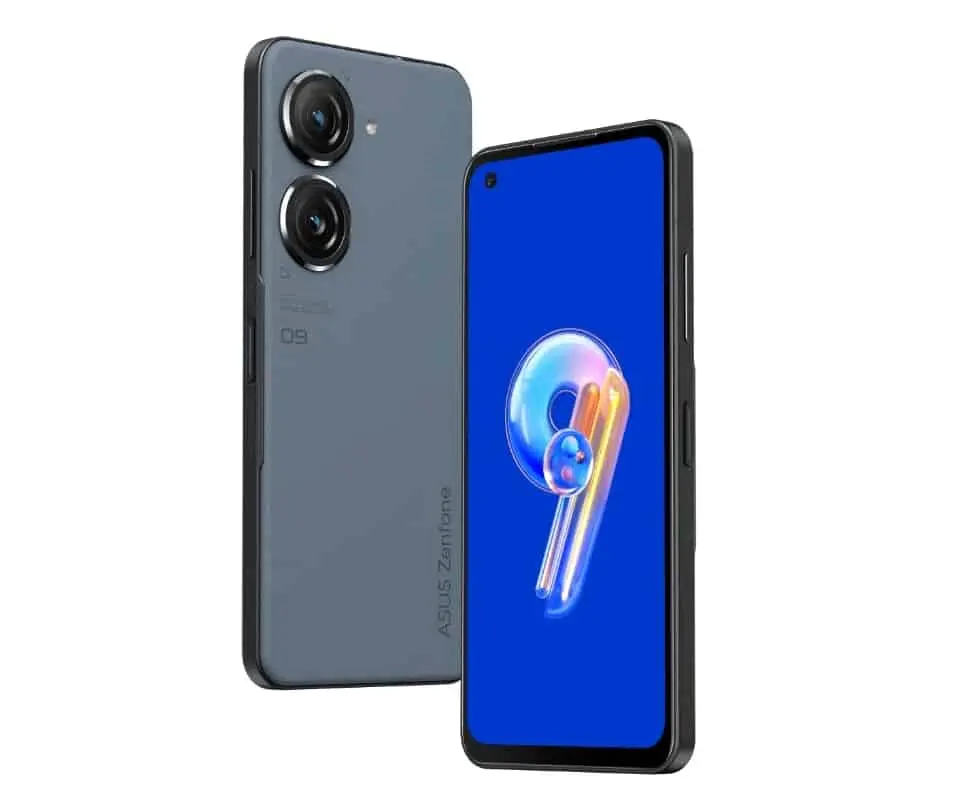
The decision to employ a 5.9inch display is crucial given the Zenfone 9’s size. That’s far smaller than most flagships – several already approaching 7inch. And more compact than even the Galaxy S22, Xiaomi 12, or iPhone 13. Apart from its size, this is essentially the most incredible tiny screen on the market. The one specification that is lacking is LTPO refresh rate scaling, which can enhance battery life.
Audio
In terms of audio, the availability of a 3.5mm headphone connection is a notable feature. This is incredibly amazing in a phone this compact and waterproof, which are two usual reasons for removing the headphone port. Unfortunately, the phone’s dual speakers did not impress me. That’s strange because Asus handles audio well and even collaborated with Dirac to tune the smartphone. However, it’s weak & tinny regardless of what you play. Much of this is due to the phone’s sheer size – larger phones suit more prominent speakers – but it’s still a tiny letdown.
Camera

The Asus Zenfone 9 can’t compete with many similarly priced phones since it has two back cameras.
The primary sensor is a 50MP Sony IMX766 sensor, which has already pleased us with its low-light skills and works admirably here. If there’s a little complaint, it is that some photos appear flat, while others look oversaturated & excessively colorful. It appears that AI processing sometimes becomes confused.
The secondary camera sensor is a 12MP ultra-wide lens with a 113-degree field view. This performs similarly to most shorter-focal-length lenses, with minimal edge distortion.
There is no zoom camera, even though many competitors at the same price have one; thus, if you want to go closer to a subject, you must use digital zoom or cropping. If you zoom in too far, this rarely looks well and rapidly results in fuzzy photographs.
Selfie Sensor
The front-facing 12MP selfie camera functioned admirably, capturing high-quality images and light. It also worked well in low-light circumstances, albeit Portrait mode introduced a lot of erroneous artificial background blur.
Video Quality
The smartphone supports up to 4K and 60fps recording, which many phones do when it comes to video. However, it’s pleasantly delightful to discover a Pro Video option, which just a few smartphones offer. This is similar to Pro Photo, but it allows you to modify the shutter speed, ISO, white balance, and other settings for video recording, giving you a lot of flexibility in the movies you take.
Beyond that, there are a few more settings, but nothing particularly noteworthy; standard modes such as light trails, slow-mo, panoramic, and time-lapse are all available.
Specs & Performance

Asus opted to equip the phone with a mid-cycle refresh CPU with overclocked performance, the Snapdragon 8+ Gen 1 – a mid-cycle refresh chip commonly featured in gaming phones & performance flagships.
When you combine that with the ability to configure the smartphone with up to 16GB RAM & 256GB storage, you get a phone that is not just powerful for its size but a true powerhouse in its own right. However, there is one major caveat: cooling. Chips become hot, and cooling technology takes up a lot of room. That’s difficult in a bit, and even though Asus claims that the phone’s thermals are 230 percent larger than the previous generation, it’s still insufficient.
In benchmarks, the Zenfone 9 outperforms Asus’s 8+ Gen 1-powered ROG Phone 6 Pro. However, that is a gaming phone with more severe cooling.
That’s not to say the Zenfone isn’t capable; just don’t expect it to be a high-end gaming gadget. In everyday use, the phone rushes by with little lag or jitter, and the 120Hz display makes it seem particularly snappy.
Naturally, it supports 5G. However, US readers should know that it does not support mmWave and hence cannot support 5G on all carriers. Wi-Fi 6E, Bluetooth 5.2, and NFC round out the connection options, and dual-SIM is supported. However, there is no way to extend storage using a microSD card.
Software

The Asus Zenfone 9 runs full Android 12 with little Asus customizations, giving you an excellent clean experience with Google’s baked-in applications and the customization advantages of this version of Android.
There are two differences from standard Android. The first is straightforward: the standard wallpaper is an Asus rather than one of Android’s selections. The second is a gaming mode that appears when you play a game and allows you to change settings and turn off alerts.
The Asus Zenfone 9 runs full Android 12 with little Asus customizations, giving you an excellent clean experience with Google’s baked-in applications and the customization advantages of this version of Android.
There are two differences from standard Android. The first is straightforward: the standard wallpaper is an Asus rather than one of Android’s selections. The second is a gaming mode that appears when you play a game and allows you to change settings and turn off alerts.
Battery Life
Even though the phone is smaller, the Zenfone 9’s battery is more significant than before, with a total battery capacity of 4300mAh. By flagship phone standards, that is still modest. However, when combined with the 8+ Gen 1’s improved power efficiency, the result is a battery that easily lasts more than a day.
The charging options are pretty restricted. Wireless charging is not supported, and cable charging is limited to 30W. It recovered 56% of the battery in half an hour, implying that a complete charge will take around an hour. Not bad, but there is better out there.
What makes ASUS unique?
ASUS reflects this beautiful creature’s power, purity, and adventurous spirit and flies to new heights with each new product it makes. Taiwan’s information technology sector has evolved tremendously in recent decades and is now a significant player worldwide.
Does the ASUS Zenfone have a removable battery?
The Zenfone 9 is Asus’s Android flagship for those who wish their phones were smaller. The Zenfone 9 is a one-of-a-kind device with a 5.9-inch screen and a Snapdragon 8+ Gen 1 chipset. A sleek Android flagship phone
Conclusion
The Zenfone 9 is what happens when a firm goes all-in on a compact flagship. While it lacks the ridiculous number of capabilities that its ROG Phone 6 Pro cousin provides, it nonetheless packs a strong punch. Its hardware is among the best available, the phone has excellent battery life, and the software is delightful.
The Zenfone 9 starts at $699 and is a steal. Other phones in this price range lack the newest Snapdragon 8 Plus Gen 1 CPU; the closest is the Galaxy S22, which has a Snapdragon 8 Gen 1 processor. Although the iPhone 13 small is more efficient than the Zenfone 9, it has shorter battery life. Asus has demonstrated that tiny phones do not have to be short-lived.


